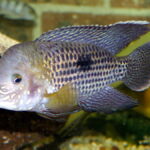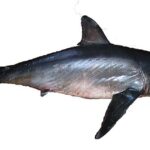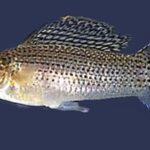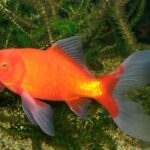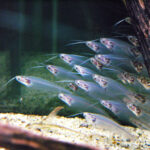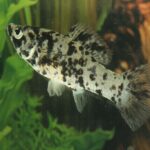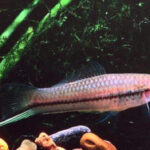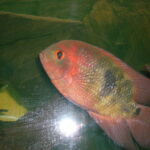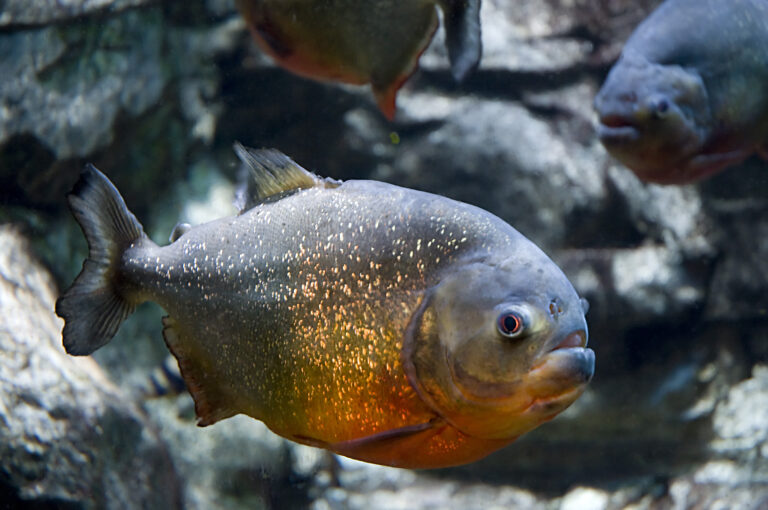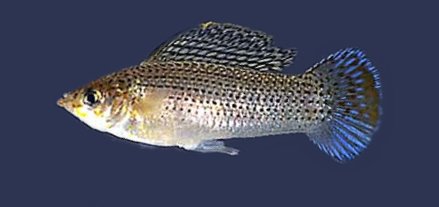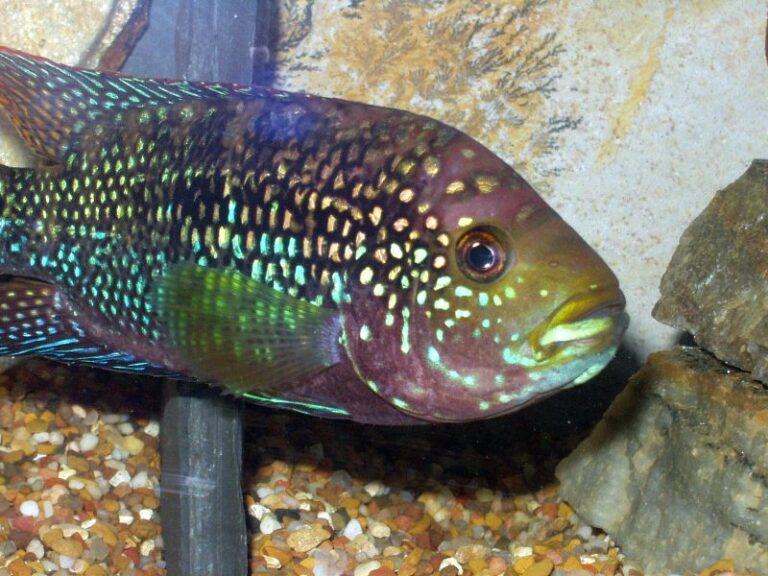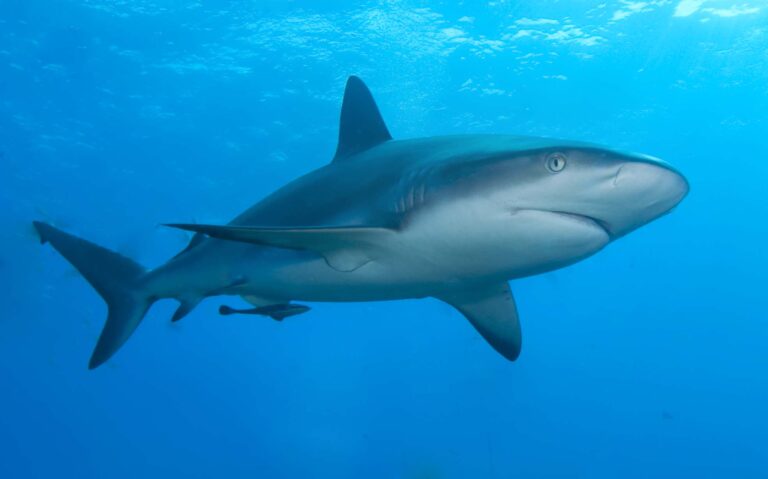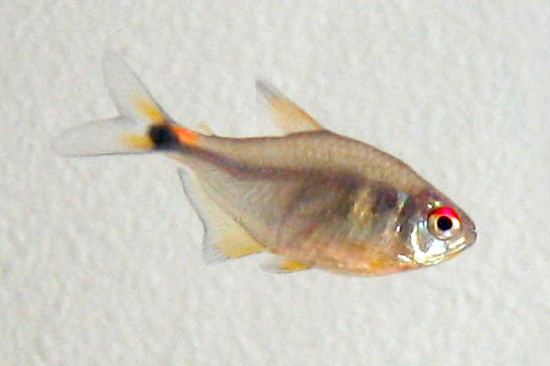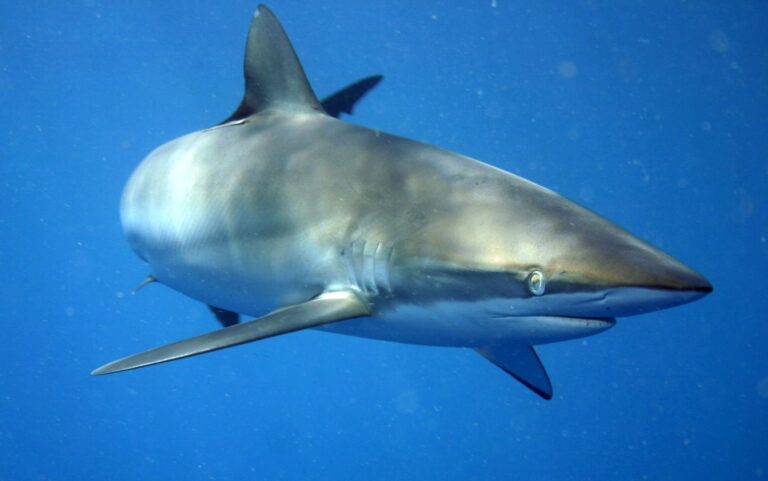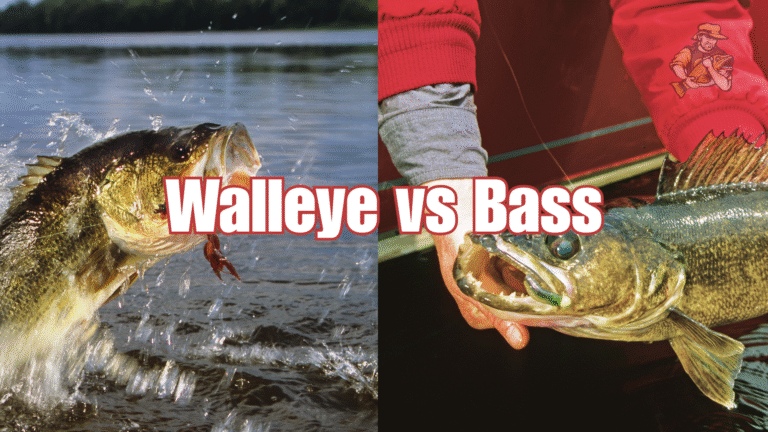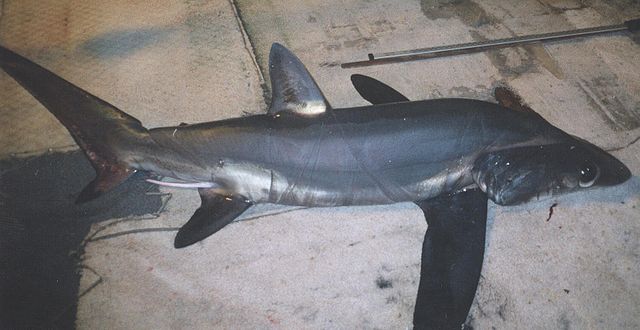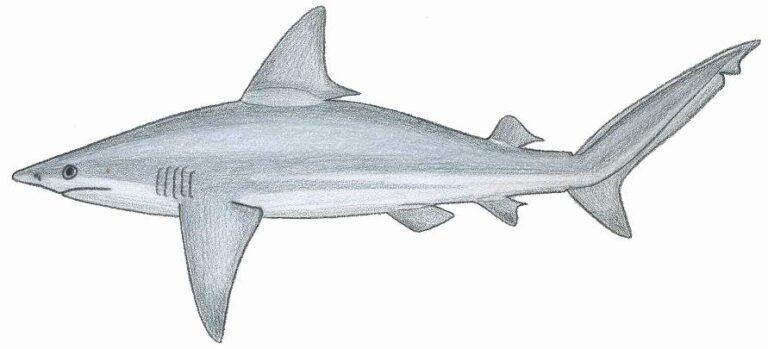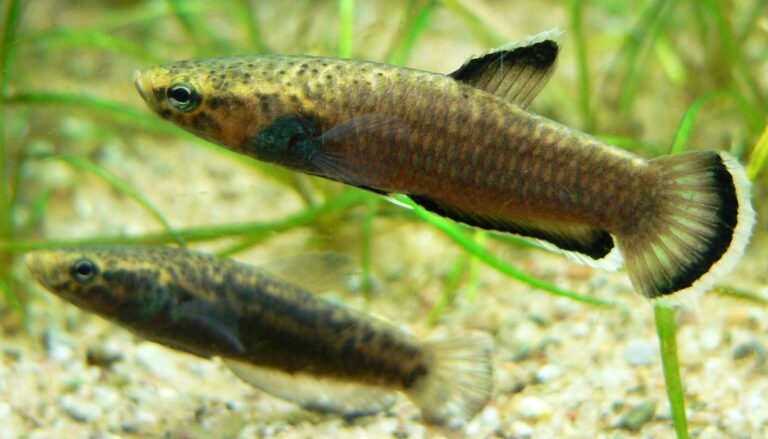Stonecat
By Ryan Maron | Last Modified: July 1, 2025

The Stonecat (Noturus flavus) represents one of North America’s most distinctive freshwater catfish species, serving as a crucial indicator of stream health and ecosystem balance. This small but resilient bottom-dweller inhabits swift-flowing streams and rivers across the Great Lakes region and Ohio River drainage, where it plays an essential role as both predator and prey in aquatic food webs. Named for its preference for rocky substrates and stone-filled riffles, the Stonecat demonstrates remarkable adaptations to high-energy aquatic environments that would challenge many other fish species.
The Stonecat’s ecological significance extends beyond its direct contributions to stream ecosystems. As a sensitive species that requires clean, well-oxygenated water with minimal sedimentation, it serves as a valuable biological indicator of watershed health. Its presence typically signals good water quality and intact stream habitats, while its absence often indicates environmental degradation. This makes the Stonecat particularly important for conservation biologists and water quality managers who monitor freshwater ecosystem integrity across the Great Lakes basin.
| Feature | Details |
|---|---|
| Common Name | Stonecat |
| Scientific Name | Noturus flavus |
| Family | Ictaluridae |
| Typical Size | 7-13 cm (2.8-5.1 inches), 5-25 grams |
| Habitat | Rocky riffles and swift streams |
| Diet | Benthic invertebrates and larvae |
| Distribution | Great Lakes basin and Ohio River drainage |
| Conservation Status | Species of Special Concern (varies by state) |
Taxonomy & Classification
The Stonecat belongs to the family Ictaluridae, which encompasses all North American freshwater catfishes. Within this diverse family, Noturus flavus represents one of approximately 29 species in the genus Noturus, commonly known as madtom catfishes. The genus Noturus is distinguished from other ictalurids by their smaller size, squared or rounded tail fins, and the presence of a poison gland associated with their pectoral fin spines.
Taxonomically, the Stonecat was first described by Rafinesque in 1818, making it one of the earlier-documented North American catfish species. The specific epithet “flavus” refers to the yellowish coloration often exhibited by this species, particularly in younger individuals. Recent molecular studies have confirmed the Stonecat’s position within the Noturus phylogeny, showing close relationships to other riffle-dwelling madtoms such as the Elegant Madtom (Noturus elegans) and Mountain Madtom (Noturus eleutherus).
The family Ictaluridae diverged from other catfish lineages approximately 50-60 million years ago, with the genus Noturus representing a more recent evolutionary radiation adapted to specialized stream habitats. This evolutionary history explains many of the Stonecat’s unique adaptations to high-energy aquatic environments, including their streamlined body form and specialized fin structures.
Physical Description
The Stonecat exhibits a distinctive morphology perfectly adapted for life in swift-flowing, rocky streams. Adults typically measure 7-13 centimeters in total length, with exceptional individuals occasionally reaching 15 centimeters. Their elongated, cylindrical body tapers gradually from the head to a squared or slightly rounded caudal fin, providing excellent hydrodynamic efficiency in fast-flowing water.
Coloration varies considerably depending on habitat and age, but most Stonecat individuals display a mottled pattern of browns, grays, and yellows that provides effective camouflage against rocky substrates. The dorsal surface typically appears darker, with irregular blotches and saddle-like markings extending down the sides. The ventral surface remains consistently lighter, often appearing cream-colored or pale yellow. Juvenile Stonecat specimens frequently exhibit more pronounced yellow coloration, which fades as they mature.
The head is notably flattened dorsoventrally, allowing the fish to maintain position in swift currents while seeking prey in rock crevices. Four pairs of barbels surround the mouth, with the maxillary barbels extending well beyond the gill covers. The eyes are relatively small and positioned dorsally, reflecting the species’ reliance on chemoreception and tactile senses for navigation and feeding in turbid water conditions.
Fin structure provides crucial identification features for the Stonecat. The dorsal fin contains one sharp spine followed by six soft rays, while the anal fin typically has 12-15 rays. The pectoral fins bear robust spines associated with poison glands, serving as both defensive weapons and aids in maintaining position against strong currents. The caudal fin’s squared or slightly rounded shape distinguishes Stonecat from many other catfish species that possess deeply forked tails.
Habitat & Distribution
The Stonecat demonstrates a highly specialized habitat preference for swift-flowing streams and rivers with rocky or gravelly substrates. This species thrives in riffle zones where water velocities exceed 30 centimeters per second, oxygen levels remain consistently high, and rocky interstices provide both shelter and feeding opportunities. These demanding habitat requirements restrict Stonecat populations to relatively pristine stream systems with minimal sedimentation and stable flow regimes.
Geographically, the Stonecat’s distribution centers on the Great Lakes basin, extending through portions of the Ohio River drainage system. Primary populations occur throughout the Lake Erie and Lake Ontario watersheds, with significant populations documented in tributaries of Lakes Michigan and Huron. The species’ range extends south through the Ohio River system into parts of Kentucky, West Virginia, and western Pennsylvania, following major river corridors that maintain suitable habitat conditions.
Within these watersheds, Stonecat populations typically inhabit stream reaches with gradients between 0.5-2.0 meters per kilometer, where natural riffle-pool sequences create the complex habitat structure essential for their survival. Water temperatures in occupied habitats generally remain below 25°C during summer months, with winter temperatures rarely falling below 2°C. The species shows strong fidelity to areas with abundant large woody debris and boulder clusters that create hydraulic complexity and diverse microhabitat niches.
Climate change and anthropogenic habitat modifications pose significant challenges to Stonecat distribution patterns. Stream warming, altered flow regimes from dam construction, and increased sedimentation from agricultural runoff have contributed to range contractions in several watersheds. Some populations now exist as isolated fragments separated by degraded habitat reaches, raising concerns about long-term genetic connectivity and population viability.
Diet & Feeding Behavior
The Stonecat employs a specialized feeding strategy perfectly adapted to its riffle habitat, functioning as an opportunistic benthic predator that targets invertebrate prey within the rocky substrate. Their diet consists primarily of aquatic insect larvae, particularly chironomid midges, mayfly nymphs, caddisfly larvae, and stonefly nymphs. This feeding specialization places Stonecat in direct competition with other riffle-dwelling species, yet their unique morphological adaptations allow them to access prey items in microhabitats unavailable to many competitors.
Feeding behavior exhibits distinct temporal patterns, with peak activity occurring during crepuscular periods when many prey species become more active. Stonecat individuals use their sensitive barbels to probe rock crevices and interstitial spaces, detecting chemical cues released by hidden invertebrates. Once prey is located, the fish employs a rapid suction feeding mechanism to extract organisms from their refugia, often requiring precise positioning to avoid being displaced by strong currents.
Seasonal dietary shifts reflect changes in prey availability and water temperature. During spring months, emerging mayfly and caddisfly nymphs constitute the largest portion of Stonecat diets, while summer feeding focuses more heavily on chironomid larvae and terrestrial insects that fall into the water. Winter feeding activity decreases significantly, though Stonecat continues to consume available invertebrates at reduced rates throughout the coldest months.
The species demonstrates remarkable feeding efficiency in high-energy environments, with individuals capable of maintaining body condition even in streams where prey density appears relatively low. This efficiency stems from their ability to exploit prey resources in hydraulic refugia where other predators cannot effectively forage, reducing intraspecific competition and maximizing energy gain per feeding effort.
Behavior & Adaptations
Stonecat behavioral adaptations reflect millions of years of evolution in high-energy stream environments, resulting in a suite of specialized traits that enable survival in conditions that would challenge most freshwater fish species. Their most remarkable adaptation involves the ability to maintain position in swift currents through a combination of morphological features and behavioral strategies that minimize energy expenditure while maximizing feeding opportunities.
Territorial behavior among Stonecat adults centers on the defense of prime feeding and shelter sites within riffle zones. Individual fish establish territories around large rocks, fallen logs, or other structures that provide both hydraulic refuge and access to invertebrate prey. Territory size varies inversely with habitat quality, with fish in optimal locations defending areas as small as 2-3 square meters, while those in marginal habitats may range over areas ten times larger.
The species exhibits pronounced rheotactic behavior, consistently orienting into current flows to maximize sensory input from upstream sources. This positioning allows Stonecat to detect chemical cues from potential prey items while minimizing the energy required to maintain position in flowing water. When threatened, individuals seek shelter in rock crevices or under large substrates, where their mottled coloration provides effective camouflage against predators.
Social interactions among Stonecat remain limited outside of the breeding season, with individuals typically maintaining spacing that minimizes aggressive encounters. However, during winter months, multiple individuals may aggregate in deeper pools or other thermal refugia, suggesting some degree of social tolerance when environmental conditions become challenging.
One of the most significant behavioral adaptations involves the Stonecat’s response to hydrologic disturbances. During flood events, individuals move to hydraulic refugia along stream margins or in tributary mouths, returning to riffle habitats as water levels recede. This behavioral flexibility allows populations to persist in dynamic stream environments where flow regimes fluctuate seasonally and during storm events.
Reproduction & Life Cycle
Stonecat reproduction follows a seasonal pattern closely tied to water temperature and photoperiod, with spawning typically occurring during late spring and early summer when water temperatures reach 18-22°C. The species exhibits a unique reproductive strategy among North American catfishes, with males constructing and defending nests in rocky cavities beneath large substrates or within root masses of riparian vegetation.
Nest construction involves the male excavating a depression beneath protective cover, often spending several days clearing sediment and debris to create a suitable cavity. Preferred nest sites possess specific characteristics including stable overhead cover, proximity to current flow for oxygenation, and substrate composition that allows for effective territory defense. Males may defend multiple potential nest sites simultaneously, increasing their chances of attracting females during the relatively brief spawning period.
Courtship behavior involves complex interactions between males and females, with successful males attracting females through chemical communication and territorial displays. Once a female enters a male’s territory, spawning occurs within the prepared nest cavity, where the female deposits 50-200 adhesive eggs that attach to the rocky substrate. Egg number correlates positively with female size, with larger individuals producing significantly more offspring.
Male parental care represents a critical component of Stonecat reproductive ecology, with males remaining at nest sites for 7-10 days to guard developing embryos. During this period, males fan the eggs with their fins to ensure adequate oxygenation and remove fungal infections or debris that could harm developing larvae. This parental investment significantly improves embryo survival rates compared to species that provide no post-spawning care.
Larval development occurs rapidly at optimal temperatures, with hatching typically occurring 6-8 days after fertilization. Newly hatched larvae remain in the nest cavity for an additional 3-5 days until yolk sacs are absorbed and they begin active feeding. Juvenile Stonecat initially consume small invertebrates and organic matter within the nest vicinity before gradually expanding their foraging range as they grow and develop stronger swimming abilities.
Predators & Threats
The Stonecat faces predation pressure from multiple sources throughout its life cycle, with vulnerability varying significantly based on size, habitat selection, and behavioral patterns. Adult Stonecat benefit from their cryptic coloration and secretive behavior, yet they remain vulnerable to larger predatory fish species that share their riffle habitats, including Channel Catfish and various bass species.
Piscivorous birds represent significant predators of Stonecat, particularly great blue herons, belted kingfishers, and mergansers that specialize in capturing fish from shallow riffle zones. These avian predators pose the greatest threat during daylight hours when Stonecat may be exposed while feeding or moving between shelter sites. The species’ poison glands provide some protection against handling predators, though their effectiveness against different predator types varies considerably.
Juvenile Stonecat face substantially higher predation rates than adults, with numerous species targeting small catfish during their first year of life. Predation during the larval and juvenile stages often determines year-class strength, with successful recruitment occurring only when environmental conditions provide adequate shelter and food resources while minimizing exposure to predators.
Anthropogenic threats pose increasingly significant challenges to Stonecat populations across their range. Habitat degradation from agricultural runoff, urban development, and mining activities has eliminated suitable habitat in many watersheds, forcing populations into isolated fragments with reduced genetic diversity. Sedimentation represents a particularly severe threat, as even moderate increases in fine sediment can eliminate the interstitial spaces essential for Stonecat feeding and reproduction.
Water quality degradation from industrial discharge, agricultural chemicals, and municipal wastewater treatment plants continues to impact Stonecat populations throughout their range. The species’ sensitivity to dissolved oxygen levels and chemical pollutants makes them particularly vulnerable to point-source pollution events that can eliminate entire local populations. Climate change effects, including increased water temperatures and altered precipitation patterns, further compound these stressors by modifying stream flow regimes and thermal characteristics.
Conservation Status
The Stonecat currently faces significant conservation challenges across much of its historical range, with many state wildlife agencies classifying the species as a Species of Special Concern or listing it under various state-level protection programs. While not federally listed under the Endangered Species Act, population declines documented in several states have prompted increased monitoring and habitat protection efforts.
Population trends indicate substantial declines in heavily developed watersheds, with some estimates suggesting 30-50% range contractions in areas subject to intensive agriculture or urban development. The species’ specialized habitat requirements make it particularly vulnerable to watershed-scale changes that affect stream morphology, water quality, and flow regimes. Fragmentation of suitable habitat has isolated many populations, reducing genetic connectivity and increasing extinction risk for smaller population remnants.
Conservation efforts focus primarily on habitat protection and restoration, with emphasis on maintaining or restoring natural flow regimes, reducing sedimentation, and preserving riparian vegetation. Several states have implemented stream assessment programs specifically designed to monitor Stonecat populations and identify critical habitats requiring protection. These efforts often involve partnerships between state agencies, universities, and conservation organizations to develop comprehensive management strategies.
Research initiatives continue to investigate Stonecat ecology and habitat requirements, providing essential information for conservation planning. Recent studies have emphasized the importance of maintaining stream connectivity and protecting entire watershed systems rather than focusing solely on individual stream reaches. This ecosystem-level approach recognizes that Stonecat populations require access to diverse habitats throughout their life cycle and that successful conservation must address landscape-scale threats.
Recovery efforts in several watersheds have shown promising results, particularly where comprehensive habitat restoration has been implemented in conjunction with pollution control measures. However, the species’ slow reproductive rate and specialized habitat requirements mean that population recovery typically requires decades even under optimal conditions.
Human Interaction
Human interactions with Stonecat populations have historically been limited due to the species’ small size, secretive behavior, and lack of commercial or recreational fishing value. However, indirect human impacts through habitat modification and water quality degradation have profoundly influenced Stonecat populations throughout their range. The species’ sensitivity to environmental changes makes them valuable indicators of ecosystem health, leading to increased scientific interest and monitoring efforts.
Research applications for Stonecat extend beyond basic ecological studies to include biomonitoring programs that use the species as an indicator of stream health and water quality. Environmental consulting firms and government agencies increasingly rely on Stonecat presence or absence as a metric for assessing the success of habitat restoration projects and the effectiveness of pollution control measures.
Educational programs in several states feature Stonecat as representative species for teaching about stream ecology and conservation biology. Their specialized habitat requirements and sensitivity to environmental changes make them excellent examples for illustrating the connections between watershed health and biodiversity conservation. Several universities maintain Stonecat research programs that provide hands-on learning opportunities for students while contributing to conservation knowledge.
Citizen science initiatives have begun incorporating Stonecat monitoring into broader stream assessment programs, though the species’ cryptic nature and specialized identification requirements limit the scope of these efforts. Professional biologists typically conduct Stonecat surveys using electrofishing equipment and specialized sampling techniques that require extensive training and permits.
The species’ role as an indicator species has led to its inclusion in various environmental impact assessments and regulatory processes. Development projects in Stonecat habitats often require specialized surveys and mitigation measures to address potential impacts on populations, though enforcement and effectiveness of these measures vary considerably among jurisdictions.
Interesting Facts
The Stonecat possesses several remarkable adaptations that distinguish it from other North American catfish species. Their pectoral fin spines contain venom glands that produce a toxin capable of causing painful stings in humans and potentially deterring predators. This defensive mechanism, shared with other madtom species, makes Stonecat one of the few venomous freshwater fish species in North America.
Stonecat demonstrate extraordinary site fidelity, with individual fish often occupying the same territory for multiple years. Mark-recapture studies have documented individuals remaining within 50-meter stream reaches for periods exceeding three years, suggesting that habitat quality and familiarity play crucial roles in their survival strategies. This behavior has important implications for conservation efforts, as habitat disturbances can have long-lasting effects on local populations.
The species exhibits remarkable sensory capabilities adapted to their turbid stream environments. Their lateral line system can detect water movements as small as 0.01 millimeters, allowing them to navigate successfully in complete darkness and detect approaching predators or prey items through hydrodynamic disturbances. This sensory system, combined with their highly sensitive barbels, enables Stonecat to thrive in environments where visual hunting would be ineffective.
Stonecat populations show interesting genetic adaptations to local environmental conditions, with some populations exhibiting enhanced cold tolerance while others demonstrate greater resistance to low oxygen conditions. These local adaptations suggest that populations may be evolving in response to specific environmental pressures, highlighting the importance of protecting genetic diversity across the species’ range.
The species plays a crucial role in stream ecosystem functioning through their consumption of invertebrate prey and their position in aquatic food webs. Stonecat can consume up to 15% of their body weight daily in invertebrate prey, making them significant predators in riffle communities despite their small size. Their feeding activity also contributes to nutrient cycling and substrate turnover in stream ecosystems.
Frequently Asked Questions
How can you identify a Stonecat in the wild?
Stonecat identification relies on several key features including their squared or rounded tail fin, mottled brown-gray coloration, and flattened head shape. Unlike many other catfish species, Stonecat possess a distinctive pattern of irregular blotches along their sides and lack the deeply forked tail characteristic of larger catfish species. Their small size, typically under 13 centimeters, also helps distinguish them from other members of the catfish family.
Are Stonecat dangerous to humans?
While Stonecat possess venomous spines that can cause painful stings, they pose minimal danger to humans under normal circumstances. The venom causes localized pain and swelling similar to a bee sting, but serious medical complications are extremely rare. Anglers who accidentally capture Stonecat should handle them carefully to avoid spine punctures, though most encounters occur during scientific sampling rather than recreational fishing.
What role do Stonecat play in stream ecosystems?
Stonecat serve as both important predators of benthic invertebrates and prey for larger fish and birds in stream ecosystems. Their specialized feeding behavior helps control invertebrate populations while their presence indicates healthy stream conditions with good water quality and intact habitat structure. As indicator species, Stonecat populations provide valuable information about overall ecosystem health to scientists and resource managers.
Why are Stonecat populations declining?
Stonecat populations face multiple threats including habitat degradation from sedimentation, water quality impairment from agricultural and urban runoff, and flow regime alterations from dam construction. Their specialized habitat requirements make them particularly vulnerable to watershed-scale changes, and their limited dispersal ability prevents recolonization of restored habitats. Climate change effects, including increased water temperatures and altered precipitation patterns, further compound these conservation challenges.
Conclusion
The Stonecat represents a unique and ecologically important component of North American freshwater ecosystems, serving as both a specialized predator and a sensitive indicator of stream health. Their remarkable adaptations to high-energy riffle environments demonstrate the evolutionary innovations that enable species to thrive in challenging ecological niches. However, mounting anthropogenic pressures threaten Stonecat populations throughout their range, highlighting the urgent need for comprehensive conservation strategies that protect entire watershed systems rather than isolated habitat fragments. The species’ future depends on our ability to maintain the clean, swift-flowing streams that have supported Stonecat populations for millennia, making their conservation a critical component of broader freshwater biodiversity protection efforts.
Share The Article:
More Fish Species:
-
Red Belly Piranha
The Red Belly Piranha (*Pygocentrus nattereri*) stands as one of South America’s most misunderstood freshwater predators, wielding razor-sharp teeth…
-
Sailfin Molly
The Sailfin Molly stands as one of the most distinctive freshwater fish species in both wild ecosystems and aquarium…
-
Delta Tail Betta
The Delta Tail Betta (Betta splendens) represents one of the most recognizable and sought-after varieties within the aquarium trade,…
-
Jack Dempsey Fish
The Jack Dempsey Fish stands as one of Central America’s most distinctive cichlid species, captivating aquarists and researchers alike…
-
Caribbean Reef Shark
The Caribbean Reef Shark (*Carcharhinus perezi*) stands as one of the most recognizable and ecologically significant predators patrolling the…
-
Head and Tail Light Tetra
The Head and Tail Light Tetra (*Hemigrammus ocellifer*) stands as one of South America’s most distinctive characin species, instantly…
Discover
-
Silky Shark
The Silky Shark represents one of the most widespread and ecologically significant requiem sharks in tropical and subtropical waters…
-
Walleye vs Bass: Different Strategies for Freshwater Predators
I still remember my first dedicated walleye trip back in 2009. After fifteen years of chasing mostly bass, I…
-
Kayaking Fishing: Ultimate Guide for Water Adventurers
There’s something magical about gliding across the water in a kayak with a fishing rod in hand. The stealthy…
-
Texas Saltwater Fishing: Essential Tips From Adam
It was June 2010, and man was I cocky heading into that first Texas saltwater trip. Drove down from…
-
Louisiana Redfish Fishing: Best Spots & Tactics for Beginners
Finding that first bull red is a moment you never forget. The pull, the power – it’s something special….
-
Bigeye Thresher Shark
The Bigeye Thresher Shark represents one of the ocean’s most extraordinary predators, distinguished by its dramatically elongated tail fin…
Discover
-
Fishing with Kids: How to Make It Fun and Educational
I’ll never forget the look on my son Tommy’s face when he caught his first bluegill. He was six,…
-
Sandbar Shark
The Sandbar Shark (Carcharhinus plumbeus) stands as one of the most recognizable and ecologically significant members of the requiem…
-
Chinook Salmon: Essential Guide for Catching Kings
There’s something almost magical about the moment when a Chinook salmon takes your lure. That heart-stopping tug, followed by…
-
Best Fishing Spots in California: Lakes, Rivers, and Coastal Hotspots
California fishing has always struck me as a study in beautiful contradictions. From snow-fed alpine lakes to sweltering desert…
-
Betta Fish
The Betta Fish, scientifically known as Betta splendens, is one of the most visually captivating and widely recognized freshwater…
-
How to Become a Better Fisherman in 2025: Master These 5 Skills
There’s something magical about that moment when your line goes tight and you feel the unmistakable pull of a…

